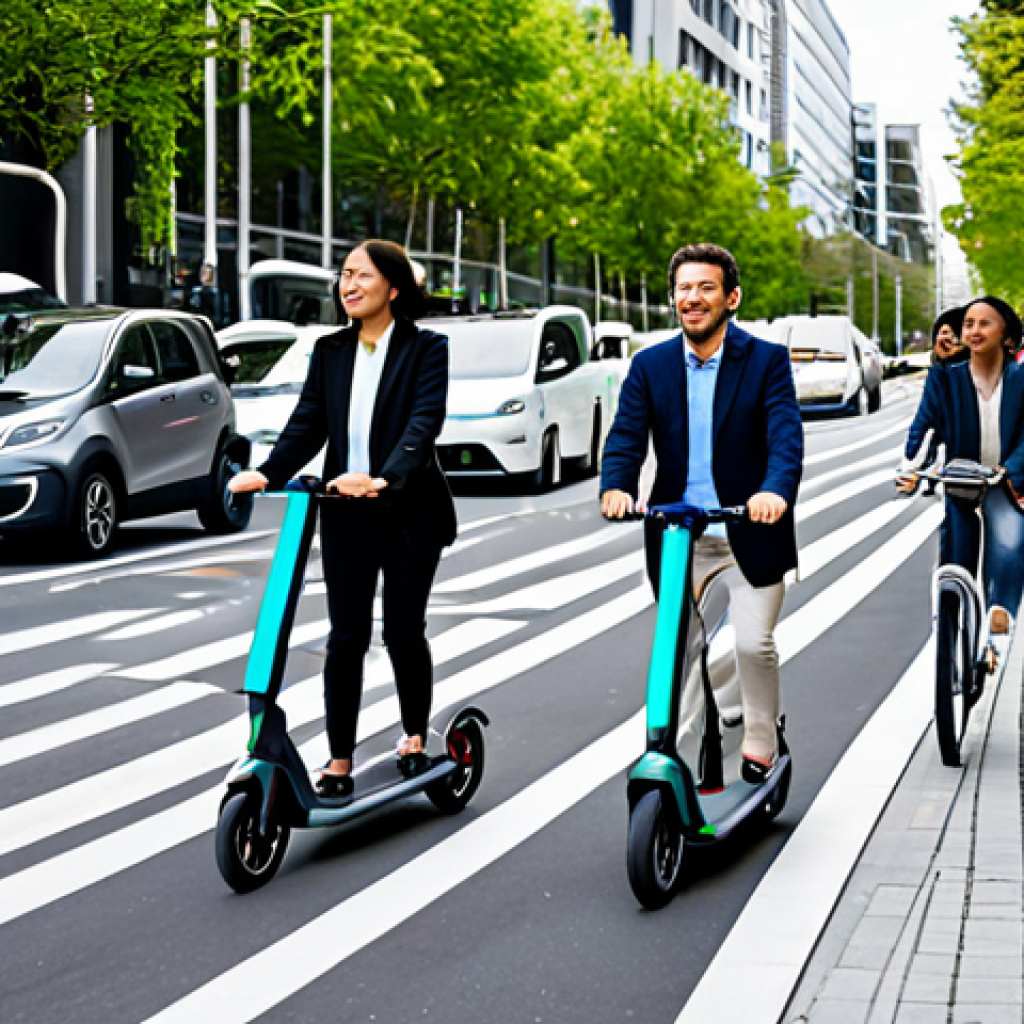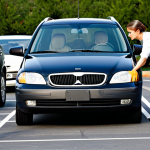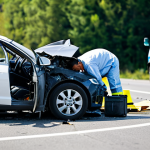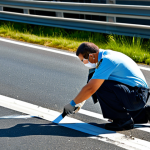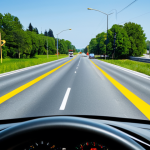The daily grind of traffic can feel like an unending nightmare, can’t it? Just last week, I was stuck for what felt like an eternity, pondering if there was *ever* a real solution to urban congestion.
That very frustration led me to an incredibly insightful conversation with a long-time road traffic professional, someone who’s witnessed the evolution of our streets firsthand.
We delved deep into everything from the impending impact of widespread autonomous vehicles and smart city infrastructure to the subtle shifts in commuter behavior amplified by remote work trends and new mobility services.
It was genuinely fascinating, offering a rare glimpse into the complex challenges and exciting innovations shaping our future journeys. Let’s explore in detail below.
The Shifting Sands of Urban Mobility: A Paradigm in Motion
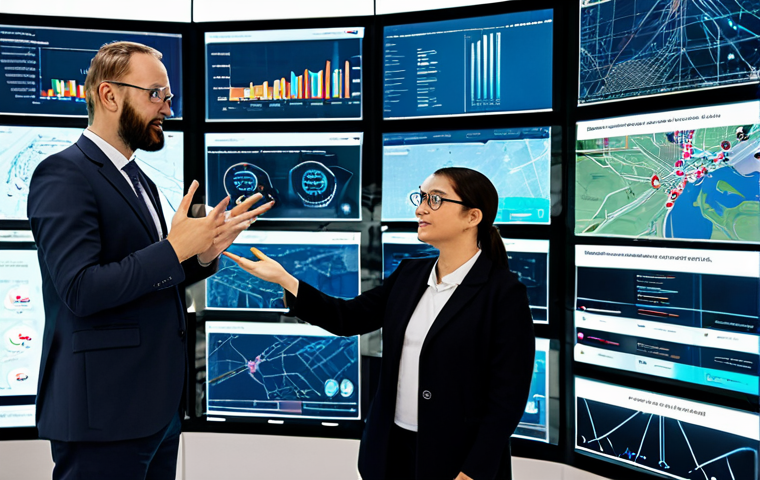
It’s easy to feel utterly defeated by traffic, isn’t it? Just the other day, as I sat stewing in what felt like a permanent parking lot on the freeway, my mind kept circling back to that incredible chat I had.
It wasn’t just a casual conversation; it was a deep dive with someone who has literally spent decades observing, analyzing, and shaping our roads. What struck me most was how he emphasized that urban mobility isn’t just about cars on asphalt anymore.
It’s a dynamic, living ecosystem constantly being reshaped by technological leaps, societal shifts, and even our collective moods. We’re moving far beyond the simple A-to-B commute, entering an era where our daily journeys are becoming intricate tapestries woven with data, shared experiences, and ever-evolving infrastructure.
This isn’t just about avoiding gridlock; it’s about redefining how we interact with our cities and reclaim precious hours of our lives. The sheer complexity, yet the immense potential, genuinely blew me away, leaving me buzzing with a new perspective on every red light and every bus stop.
-
Autonomous Vehicles: From Sci-Fi Dream to Daily Drive?
The concept of driverless cars still sounds a bit futuristic to many, but my contact assured me it’s not just around the corner, it’s already here in pilot programs and specialized fleets. The biggest immediate impact, he believes, won’t be a sudden, universal switch, but a gradual integration into public transport and logistics first. Imagine dedicated lanes for autonomous shuttles, seamlessly ferrying people from suburbs to city centers, or AI-driven trucks handling night-time deliveries, freeing up daytime roads. The challenges, of course, are monumental: regulatory frameworks need to catch up, public trust needs to be earned, and the ethical dilemmas of programming decision-making are still being debated fiercely. But the promise of vastly improved safety, reduced human error, and optimized traffic flow is just too compelling to ignore. He shared a story about an early autonomous shuttle trial he observed, where the sheer smoothness of the ride and its predictable behavior had passengers, initially skeptical, quickly relaxing into their journey, a real testament to the potential for human acceptance. This isn’t just about tech; it’s about shifting mindsets, too.
-
Smart City Infrastructure: The Invisible Architect of Flow
Behind the scenes, city planners and engineers are essentially building a nervous system for our urban environments. This isn’t just about putting up more traffic lights; it’s about creating an interconnected web where sensors monitor real-time traffic density, optimize light timings based on demand, and even detect potholes before they become hazards. My expert friend highlighted how truly smart infrastructure will communicate directly with vehicles, offering dynamic rerouting suggestions based on accidents, construction, or even localized events like concerts. He once described it as the city “breathing” – inhaling and exhaling traffic in a far more efficient, organic way than our current static systems allow. Think about it: fewer sudden braking incidents, less wasted fuel from idling, and potentially, a significant drop in commuter stress. The sheer volume of data being collected and analyzed is mind-boggling, transforming urban planning from a reactive process into a proactive, predictive science, continually adapting to the city’s pulse.
The Remote Work Revolution: Unintended Traffic Consequences
Who would have thought that trading the daily commute for a home office would still impact traffic? Before the pandemic, the concept of widespread remote work was largely a niche phenomenon.
Now, for millions, it’s a standard operating procedure. My traffic professional friend observed that while peak hour congestion has lessened in some areas, especially in central business districts, it hasn’t disappeared entirely.
Instead, it’s fragmented and spread out. People are now running errands during what used to be off-peak hours, or choosing to drive for social activities they might have previously done near their workplace.
What we’re seeing is a ‘blurring’ of the traditional commute. Leisure trips now often contribute to congestion at times and in places that were once quiet.
It’s a fascinating, almost paradoxical outcome where less commuting overall doesn’t necessarily mean uniformly lighter traffic, but rather a redistribution of it.
He recounted observing suburban roads, once sleepy during midday, now seeing consistent activity as people venture out for lunch, appointments, or simply to escape their home offices for a bit.
-
The Suburban Surge: New Bottlenecks Emerge
With more people working from home, the traditional “spokes and hub” model of urban traffic has been challenged. Instead of everyone converging on the city center, we’re seeing increased localized traffic within suburban areas. This means that routes and intersections that were never designed for high volumes are now feeling the pressure. Local roads, often narrower and less optimized, are experiencing more wear and tear, and the usual morning and evening rush hour patterns are becoming less distinct. For years, city planners focused primarily on arterial roads leading into major urban cores. Now, the emphasis is shifting to improving neighborhood connectivity and addressing congestion within residential areas themselves. It’s an interesting recalibration that requires a fresh look at zoning, local public transport, and even pedestrian infrastructure.
-
Leisure and Errands: The New Peak Hours?
Beyond the traditional 9-to-5, the flexibility offered by remote work has allowed people to schedule personal appointments and run errands throughout the day. This has led to what my expert called “micro-peaks” of traffic at seemingly random times. Tuesdays at 11 AM might now look like a Friday afternoon in certain retail districts, or school pick-up times might blend into mid-afternoon shopping trips. This complicates traditional traffic management strategies that rely on predictable patterns. It means that traffic signals and public transport schedules need to become far more adaptive and responsive, leveraging real-time data to adjust to these new, less structured demands. It also suggests that our personal habits, even when we think we’re avoiding traffic, are simply reshaping it elsewhere.
Rethinking the Ride: The Explosion of Alternative Mobility
Remember when your only options were driving, taking a bus, or maybe a very long walk? That feels like an ancient memory now. The landscape of personal transportation has been utterly transformed by an incredible array of new mobility services.
My seasoned contact was particularly enthusiastic about how these options are empowering individuals to make more conscious, often more sustainable, choices about how they get around.
It’s not just about getting from A to B; it’s about efficiency, environmental impact, and increasingly, personal preference. This rapid diversification is challenging the traditional car-centric model of urban living and opening up exciting possibilities for reduced congestion and cleaner air.
It truly feels like we’re on the cusp of a mobility renaissance, where the car is just one of many tools in our commuting toolbox, not the sole solution.
-
The Rise of Micro-Mobility: Scooters, Bikes, and Beyond
I’ve certainly noticed more electric scooters and bikes zipping around, and my friend confirmed that micro-mobility is no longer a fleeting trend; it’s a significant piece of the urban puzzle. These services offer unparalleled flexibility for short distances, bridging the “last mile” gap from public transport hubs to final destinations. Think about grabbing an e-scooter from the subway station to get to that meeting a mile away, saving time and avoiding a taxi. While they bring their own challenges – think sidewalk clutter and safety concerns – their environmental benefits and potential to reduce reliance on personal cars are undeniable. He mentioned that cities are now actively planning for dedicated micro-mobility lanes and parking, recognizing their enduring role in urban movement. It’s a testament to how quickly our habits can change when convenient, eco-friendly options become available right at our fingertips.
-
Mobility-as-a-Service (MaaS): The Integrated Journey
This is perhaps the most exciting, yet complex, innovation my contact discussed. MaaS platforms aim to integrate all forms of transport – public transit, ride-sharing, bike rentals, car-sharing, and even micro-mobility – into a single, seamless app experience. Imagine planning a trip where the app suggests taking a bus for the first leg, then a shared e-bike, and finally a short walk, all booked and paid for within one interface. The goal is to make using diverse transport options so convenient that owning a personal car becomes less appealing, especially in densely populated urban areas. It’s about optimizing routes, reducing costs, and making sustainable choices effortless. The future, he believes, will be less about *owning* a vehicle and more about *accessing* mobility on demand, tailored precisely to your needs at any given moment.
Navigating the Congestion Conundrum: Overcoming Urban Gridlock
While the future promises exciting advancements, the immediate reality for many of us is still persistent gridlock. The insights from my traffic expert underscored that addressing urban congestion isn’t a single solution but a multifaceted challenge requiring continuous adaptation and innovation.
It’s a bit like playing a massive, never-ending game of whack-a-mole; solve one problem, and another pops up elsewhere. However, there are tangible, actionable strategies that cities are employing, or should be, to genuinely improve the flow of traffic and, more importantly, the quality of life for their residents.
It’s a constant battle, but one where every small victory contributes to a more breathable, less frustrating urban experience.
-
Dynamic Pricing and Congestion Charges: The Economic Lever
One of the most direct, albeit often controversial, methods for managing congestion is through economic incentives. My expert highlighted how cities like London and Stockholm have successfully implemented congestion charges, discouraging non-essential private vehicle use in peak times or high-density areas. The idea is simple: if it costs more to drive into certain zones at certain times, people will seek alternatives. This not only reduces the number of cars but also generates revenue that can be reinvested into public transport infrastructure. While it might sound punitive, the real-world results often show significant reductions in traffic and improved air quality. He emphasized that for these systems to be truly effective and equitable, robust public transport alternatives must be readily available and genuinely attractive to commuters.
-
Public Transport Reinvention: Beyond the Bus Stop
Perhaps the single most critical component in alleviating urban congestion is a robust, reliable, and user-friendly public transport system. This means more than just adding buses; it involves creating integrated networks, improving frequency, and enhancing the overall passenger experience. My contact shared how some cities are experimenting with “on-demand” bus services, using algorithms to optimize routes and pick-up points based on real-time requests, blurring the lines between traditional fixed-route buses and ride-sharing. High-speed rail connections between urban centers and dedicated bus rapid transit (BRT) lanes are also vital, ensuring that public transport offers a genuinely competitive alternative to driving, not just a last resort.
The Human Element: Our Role in Future-Proofing Urban Travel
It’s easy to get lost in the technological marvels and grand city plans, isn’t it? But as my candid conversation with the traffic professional unfolded, one crucial point became abundantly clear: none of these innovations will reach their full potential without a fundamental shift in human behavior and mindset.
Technology can pave the way, but ultimately, it’s our choices, our willingness to adapt, and our collective commitment that will truly shape the future of urban mobility.
He passionately argued that simply building more roads or deploying more autonomous vehicles won’t solve the core problem if we don’t also evolve how we think about our daily journeys.
This really resonated with me because it puts the power back in our hands, reminding us that we’re not just passive recipients of traffic, but active participants in its ebb and flow.
-
Cultivating a Multi-Modal Mindset: Beyond the Single Car
For generations, the personal car has been the default mode of transport, a symbol of freedom and convenience. However, my expert stressed that for urban environments to truly thrive, we need to cultivate a “multi-modal” mindset. This means viewing our commute not as a fixed routine, but as a flexible puzzle where different pieces (walking, cycling, public transport, ride-shares, micro-mobility) can be combined to form the most efficient and enjoyable journey. He shared anecdotes of people who started cycling to their local train station and discovered not only the joy of exercise but also the stress relief of not being stuck in traffic. It’s about breaking free from the habit of automatically reaching for car keys and instead considering all available options, recognizing that the “best” way to travel can vary day by day, hour by hour.
-
Advocacy and Active Participation: Shaping Our Cities
Finally, the traffic professional emphasized the critical role of citizen engagement. It’s not enough for city planners to dream up smart solutions; residents need to be active participants in the conversation. This means voicing opinions on new infrastructure projects, supporting policies that prioritize public transport and active travel, and even participating in community initiatives that promote sustainable mobility. He described instances where local community input genuinely shaped the outcome of road redesigns, making them safer and more pedestrian-friendly. Our collective voices, when channeled effectively, can exert significant influence, pushing for changes that genuinely improve our daily lives and contribute to a more sustainable, less congested urban future. After all, these are *our* streets, *our* cities, and *our* collective future.
The Green Commute: Driving Towards Sustainable Urban Living
The environmental imperative looming over our planet makes discussions about urban traffic more urgent than ever. My conversation with the traffic veteran naturally steered towards the profound impact our commuting choices have on air quality, carbon emissions, and overall urban health.
It’s not just about getting to work or school; it’s about doing so in a way that safeguards our environment for future generations. He passionately articulated that while technological fixes are crucial, a genuine shift towards sustainable urban living necessitates a fundamental re-evaluation of how we move through our cities.
The goal isn’t just less traffic; it’s cleaner, quieter, and ultimately, healthier cities for everyone who lives, works, and plays in them.
-
Electrification of Fleets: A Quieter, Cleaner Future
The transition to electric vehicles (EVs) is a cornerstone of sustainable urban mobility. My expert friend noted that while personal EV adoption is growing, the real game-changer for cities will be the electrification of public transport fleets, delivery vans, and ride-sharing services. Imagine buses that glide silently past, emitting no tailpipe pollutants, or delivery trucks that make their rounds without the roar of a combustion engine. This immediate reduction in localized air pollution has tangible health benefits for urban residents, particularly those living near busy roads. He recounted a trial where a fully electric bus route transformed the noise profile of a busy street, creating a noticeable sense of calm, something unimaginable with traditional diesel vehicles. The infrastructure challenges for widespread charging are significant, but the long-term benefits for urban air quality and noise reduction are too compelling to ignore.
-
Promoting Active Travel: Walking, Cycling, and Well-being
Sometimes, the simplest solutions are the most profound. My contact was a huge proponent of encouraging active modes of transport: walking and cycling. Beyond the obvious environmental benefits of zero emissions, these modes offer immense public health advantages. He spoke about cities actively redesigning their streets to be more pedestrian and cyclist-friendly, adding dedicated bike lanes, wider sidewalks, and more green spaces. It’s about making active travel a genuinely attractive, safe, and enjoyable alternative, not just a niche activity. When people choose to walk or cycle, it directly reduces the number of cars on the road, eases pressure on public transport, and contributes to a more vibrant, community-oriented urban environment. It’s a win-win: better health for individuals and a healthier planet for all.
The Socio-Economic Threads of Traffic: Equity and Accessibility
It’s easy to view traffic solely through the lens of congestion or technology, but my conversation with the seasoned traffic professional consistently circled back to a profoundly important aspect: the socio-economic implications of urban mobility.
He illuminated how access to efficient and affordable transportation isn’t just a convenience; it’s a fundamental determinant of opportunity, equity, and social mobility within a city.
A well-functioning transport system can connect individuals to jobs, education, healthcare, and social networks, whereas a failing one can exacerbate existing inequalities, trapping vulnerable populations in cycles of limited access and economic disadvantage.
This isn’t just about moving vehicles; it’s about moving people’s lives forward.
-
Bridging the Access Divide: Public Transport as a Social Equalizer
My expert friend stressed that robust, affordable public transport is perhaps the most powerful tool for fostering urban equity. For many low-income individuals, car ownership is an unattainable luxury, making reliable public transit their lifeline to the city’s opportunities. He recounted how a new bus line extended into an underserved neighborhood not only cut commute times for residents but also opened up access to better-paying jobs and higher education institutions they previously couldn’t reach. It’s about more than just getting to a destination; it’s about connecting people to vital resources. Investing in and expanding public transport networks, particularly in marginalized areas, can significantly reduce the “transportation burden” on households and unlock economic potential for entire communities, serving as a genuine engine of social mobility.
-
The ‘Right to the City’: Designing for All Users
Beyond just public transport, the concept of the “right to the city” implies designing urban spaces that are accessible and navigable for *all* users, not just those in private vehicles. This means prioritizing pedestrians, cyclists, and individuals with disabilities. My contact talked passionately about cities implementing “complete streets” policies, which ensure that road designs consider all modes of transport, including safe crosswalks, accessible sidewalks, and dedicated cycling infrastructure. He highlighted instances where seemingly small changes, like improved street lighting or clear signage, dramatically enhanced safety and usability for walkers and cyclists, particularly for women and the elderly. It’s about creating inclusive urban environments where every citizen, regardless of their mode of transport or physical ability, can move freely and safely, fostering a more equitable and vibrant urban fabric.
The Future is Interconnected: AI, Data, and Urban Planning
The final, and perhaps most mind-bending, aspect of our discussion revolved around the exponential growth of data and artificial intelligence, and how these forces are poised to revolutionize urban planning itself.
It’s not just about managing traffic anymore; it’s about predicting it, understanding its root causes, and even influencing human behavior in subtle ways to optimize flow.
My traffic professional friend, with a glint in his eye, spoke of a future where cities are truly ‘alive’ with data, constantly learning and adapting, making urban living smoother and more sustainable.
This interconnectedness promises a level of efficiency and responsiveness that was unimaginable just a decade ago, truly pushing the boundaries of what a city can be.
-
Predictive Analytics: Anticipating Tomorrow’s Gridlock
Gone are the days of reacting to traffic jams after they’ve formed. With the advent of advanced AI and machine learning, cities are now leveraging predictive analytics to forecast congestion before it even begins. My expert explained how algorithms can analyze vast datasets—including historical traffic patterns, weather forecasts, event schedules, and even social media sentiment—to anticipate where and when bottlenecks are likely to occur. This allows traffic managers to proactively adjust signal timings, deploy public transport, or issue early warnings to commuters, guiding them away from potential snarls. He described it as having a crystal ball for urban movement, enabling a shift from reactive crisis management to proactive optimization, saving countless hours of wasted time and fuel.
-
Digital Twins and Simulation: Testing the Future Before It Arrives
Perhaps one of the most exciting applications of AI in urban planning is the creation of “digital twins” – virtual replicas of entire cities or specific urban segments. My contact excitedly described how these sophisticated models allow planners to simulate the impact of new infrastructure projects, policy changes, or even major events *before* they are implemented in the real world. Want to see how a new bike lane affects bus schedules? Or how a new high-rise impacts rush hour flow? The digital twin can run thousands of scenarios in moments, identifying potential problems and optimizing solutions. This eliminates guesswork, reduces costly errors, and allows for rapid iteration and improvement in urban design. It’s like having a real-time, giant sandbox for urban experimentation, ensuring that every decision is backed by data-driven insights and a thorough understanding of its potential ripple effects.
| Aspect | Traditional Urban Commute (Past/Present) | Future-Oriented Urban Mobility (Emerging) |
|---|---|---|
| Primary Mode | Private car ownership (dominant) | Integrated multi-modal options (MaaS, shared, micro-mobility) |
| Traffic Management | Static light timings, reactive to incidents | Dynamic, AI-optimized signals, predictive analytics |
| Infrastructure Focus | Road expansion, car-centric design | Smart city sensors, dedicated active travel lanes, EV charging |
| Commuter Behavior | Fixed peak hours, A-to-B mindset | Flexible travel times, journey optimization, diverse choices |
| Environmental Impact | High emissions, noise pollution, congestion | Reduced emissions (EVs), less noise, improved air quality |
| Accessibility | Often car-dependent, public transport limited | Enhanced public transit, active travel, equitable access for all |
Closing Thoughts
After diving deep into the intricate world of urban mobility with someone who lives and breathes it, I’m left with a profound sense of optimism. It’s clear that the future of how we move isn’t a linear progression, but a vibrant tapestry of interconnected technologies, policy shifts, and evolving human choices.
We’re not just passengers anymore; we’re active shapers of a more efficient, equitable, and sustainable urban future. This journey isn’t without its bumps, but the potential to reclaim our cities, and indeed, our time, feels genuinely within reach.
Useful Information
1. Research your city’s public transit apps. Many now offer real-time tracking and multi-modal journey planning, making it easier than ever to ditch the car for specific trips.
2. Explore micro-mobility options like e-scooters or bike-sharing services available in your area. They’re perfect for short distances and can significantly cut down on car use for quick errands.
3. Consider remote work flexibility if your job allows. Even one day less commuting per week can cumulatively reduce congestion and your carbon footprint.
4. Advocate for better urban planning in your community. Join local groups that push for pedestrian-friendly streets, dedicated bike lanes, and improved public transport. Your voice matters!
5. Try a “car-free challenge” day or week. You might be surprised at how many convenient alternatives exist and how much stress it alleviates when you’re not stuck in traffic.
Key Takeaways
The paradigm of urban mobility is rapidly shifting, driven by autonomous vehicles, smart infrastructure, and the remote work revolution. Alternative transport options like micro-mobility and Mobility-as-a-Service are reshaping how we commute, offering more sustainable and efficient choices.
Addressing congestion requires a multi-faceted approach, integrating economic incentives, public transport reinvention, and a crucial shift in human mindset towards multi-modal travel.
Ultimately, the future of urban mobility is interconnected with AI and data, promising more equitable, sustainable, and efficient cities through proactive planning and citizen engagement.
Frequently Asked Questions (FAQ) 📖
Q: Given your deep dive with that traffic professional, what’s the real timeline for autonomous vehicles making a noticeable dent in our daily commute chaos, or is it still just sci-fi?
A: Honestly, that was one of my burning questions too! What I gathered, speaking to someone who’s literally seen roads evolve over decades, is that while the tech for autonomous vehicles is truly astounding and advancing rapidly, the widespread, transformative impact on congestion isn’t quite around the corner.
We’re talking more than just a few robotaxis here and there. It’s about a complete ecosystem change – regulation, public trust, massive infrastructure upgrades, and the sheer volume of AVs needed to reach critical mass on our roads.
My friend pointed out that even once AVs become common, the initial phase might even make things worse as we figure out mixed traffic flows with human-driven cars.
So, while I’m hopeful, my gut feeling (and the expert’s informed one) says we’re looking at decades for truly widespread congestion relief from AVs alone, not just a few years.
It’s a marathon, not a sprint, which, I admit, was a bit deflating to hear when I’m sitting in bumper-to-bumper traffic!
Q: You mentioned remote work trends and new mobility services. From your conversation, are these truly easing traffic, or are they just shifting where and when congestion occurs?
A: Oh, this is such a fascinating, almost frustrating, point! I was really hoping remote work would be some kind of magic bullet, and initially, during the pandemic, it certainly felt like it.
But what my contact highlighted is that it’s far more complex than just fewer cars on the road during traditional rush hour. Sure, some traditional peak-hour commutes have thinned out, but now we’re seeing what he called “shoulder” peak times emerge, or more congestion on weekends as people feel freer to run errands or socialize.
And those new mobility services? While ride-sharing or e-scooters offer alternatives, they also introduce new challenges. Think about the massive increase in delivery vehicles for online shopping – those are still vehicles on the road!
Or, in some cities, ride-sharing actually adds to congestion by increasing ‘deadheading’ (empty vehicle miles) or by pulling people out of more efficient public transit.
It’s like squeezing a balloon – you alleviate pressure in one spot, and another bulges out. The expert’s take was that these trends are certainly reshaping traffic patterns, but whether they’re a net positive for overall congestion is still very much an open, city-by-city question.
It definitely isn’t the universal silver bullet I sometimes wish it was.
Q: What was the biggest, most unexpected hurdle you discussed for rolling out ‘smart city’ solutions to tackle traffic?
A: This was the one that genuinely made me pause and think differently. You know, before that conversation, I’d always assumed the main challenge with smart city tech – like adaptive traffic lights or AI-powered routing – was purely technological or financial.
Like, “Can we build it? Can we afford it?” But my traffic professional friend really hammered home that the biggest hurdle often isn’t the tech itself, or even the money for the hardware, but surprisingly, it’s data sharing and governance.
Imagine trying to coordinate all the different stakeholders: city planning, public transport, private mobility companies, even utility companies, all needing to share sensitive real-time data seamlessly and securely.
Who owns that data? Who can access it? How do we ensure individual privacy?
It’s a regulatory and political maze! Getting everyone on the same page, with common standards and mutual trust, to share the granular data needed for a truly ‘smart,’ integrated system is an absolutely massive undertaking.
My friend even shared an anecdote about a pilot project in a major US city where the tech was ready to go, but they hit a wall for months just trying to figure out the legal frameworks for data sharing between city departments and a private tech vendor.
It’s a logistical Gordian knot, and far less ‘sexy’ than the tech itself, but absolutely critical for any real smart city breakthrough.
📚 References
Wikipedia Encyclopedia
구글 검색 결과
구글 검색 결과
구글 검색 결과
구글 검색 결과
구글 검색 결과
